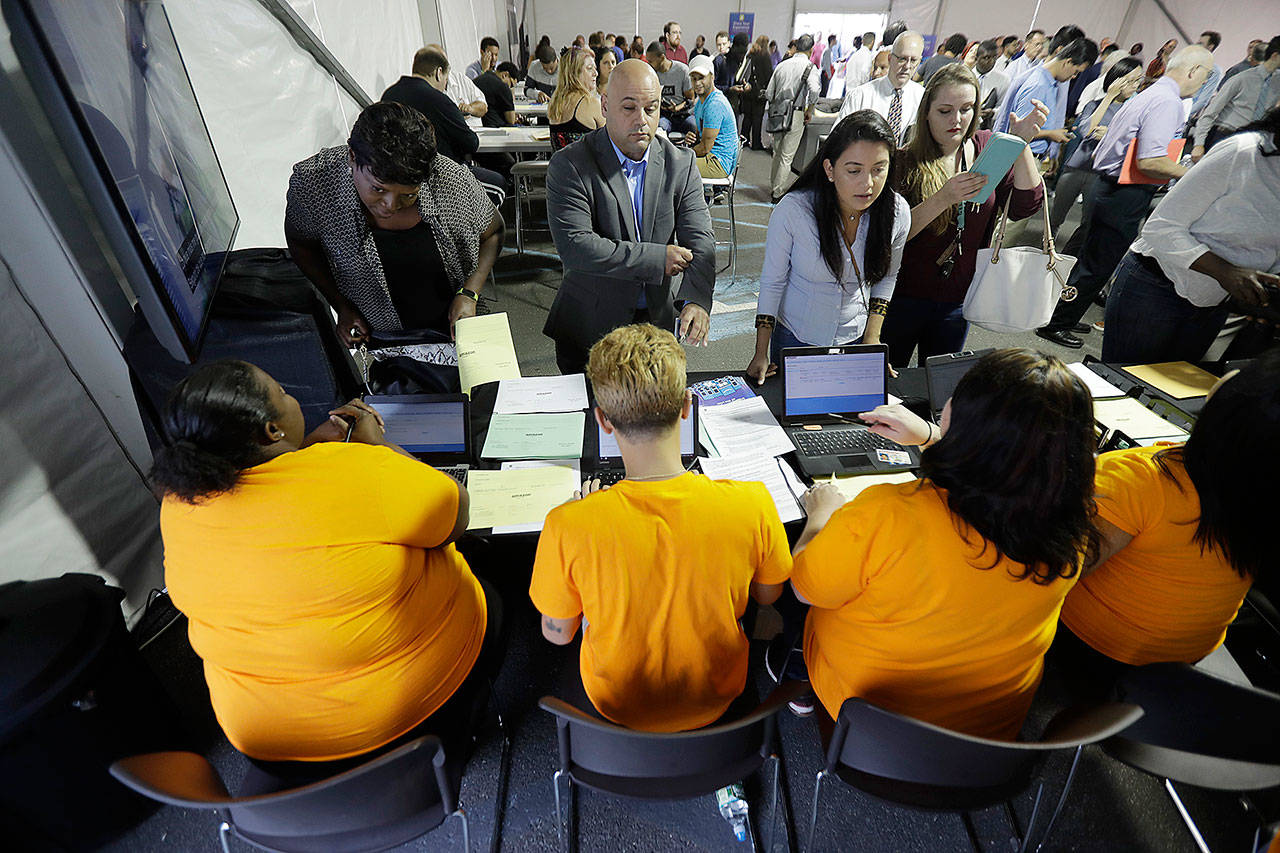By Heather Long, The Washington Post
WASHINGTON — The U.S. has a record 6.2 million job openings. It’s the highest number since the Labor Department began tracking job postings in 2000.
At the same time, there are 7 million unemployed Americans. That’s almost one job for every person searching for a role. This should be a no-brainer, right? Get the jobless onto the doorsteps of these employers.
Sadly, it’s not that easy. There are two fundamental problems with the job market today: Businesses complain they can’t find qualified workers to fill the jobs, and workers complain they aren’t getting paid enough.
The view from a lot of CEOs is that there aren’t any good workers left. Over half of small business owners in America say there are “few or no qualified applicants” for the jobs they have open right now, according to the latest NFIB Small Business Survey released hours before the Labor Department said there was a record number of job openings. We have heard for years that there aren’t enough computer programmers, but the grumbling goes deeper than that.
Too many workers these days show up drunk or high on weed, managers say. Or they refuse to work late or on weekends. Some companies are bringing in robots because they can’t find enough humans willing to do the work anymore. The other obvious solution is to bring in more immigrants, but President Trump wants to do the exact opposite. Last week, he proposed slashing legal immigration by 50 percent in the next decade.
“The demand for qualified warm bodies remains healthy but the supply of them remains stunted,” says Peter Boockvar, chief market analyst at The Lindsey Group in Virginia. He points out that over 18 percent of Americans between the ages of 25 and 54 aren’t working. That’s almost one in five people in that “prime age” category. It wasn’t like that in the boom times of the 1990s and early 2000s. There would be about 2.5 million more prime age workers employed today if the same percentage of Americans were working now as in the 1990s.
But workers also have a message for CEOs: Pay us more. Wages are barely growing. Companies have to pay up if they want better talent. During the Great Recession, there were almost 7 unemployed people for every job opening. Businesses could afford to be choosy — and offer low salaries. Today, the situation is dramatically different. There’s only 1 job seeker for every opening. Experts keep forecasting that wages will rise. This kind of “tight labor market” should trigger fatter paychecks for workers, but so far, that isn’t happening.
“When businesses give this anecdotal evidence that they can’t find the workers they want, the first thing I would ask them is: Have you increased your pay?” says economist Elise Gould of the Economic Policy Institute, a liberal think tank.
It’s telling that 5 of the 10 jobs the U.S. government projects will grow the fastest over the next decade pay less than $25,000 a year. The jobs have titles such as personal care aid, home health aid and food preparer. It’s a vicious cycle: Companies don’t pay enough. Then they complain workers aren’t dedicated and loyal.
Gould’s advice to businesses is to “be a less picky” and, in some cases, to stop discriminating. She notes that the unemployment rate for black workers (7.3 percent) is still much higher than for whites (3.7 percent). There are people ready to work. The Washington Post’s Jennifer Contrera followed Donna Maria Osborne, a 59-year-old African-American woman in Washington D.C., to a recent job fair. Despite years of experience as an administrative assistant, she was routinely told she wasn’t what employers were looking for. “I think it’s my age,” she says.
In one particularly telling moment, Osborne finds a booth at the job fair that’s trying to hire people for a call center. Osborne feels like this is it, until the representative explains, “They are looking for a background in call centers. Billing, and so forth. So if you worked in a doctor’s office or something like that, that’s customer service, but it wouldn’t be on the scale of this call center environment.”
The company won’t hire Osborne because she hasn’t worked in a call center before. It sounds mind-boggling, but some employers are still that picky. They refuse to even do minimal training. At the same time, Trump’s first budget proposes cutting government-funded job training programs by 40 percent.
An environment like this — low unemployment, lots of jobs openings — should be win for workers. Salaries should be rising and employers should be willing to give people a chance. But that’s not what is happening. Instead, CEOs are frustrated they can’t fill jobs, workers are upset their pay is meager and millions of job seekers just want someone to give them a chance.
Trump talks about wanting to create 25 million new jobs. The issue isn’t the job openings. America keeps breaking new records for job openings. It’s been like that for over a year. The issue is training people for jobs — and paying them more. It’s proving a lot harder to solve those problems.
Talk to us
> Give us your news tips.
> Send us a letter to the editor.
> More Herald contact information.

























